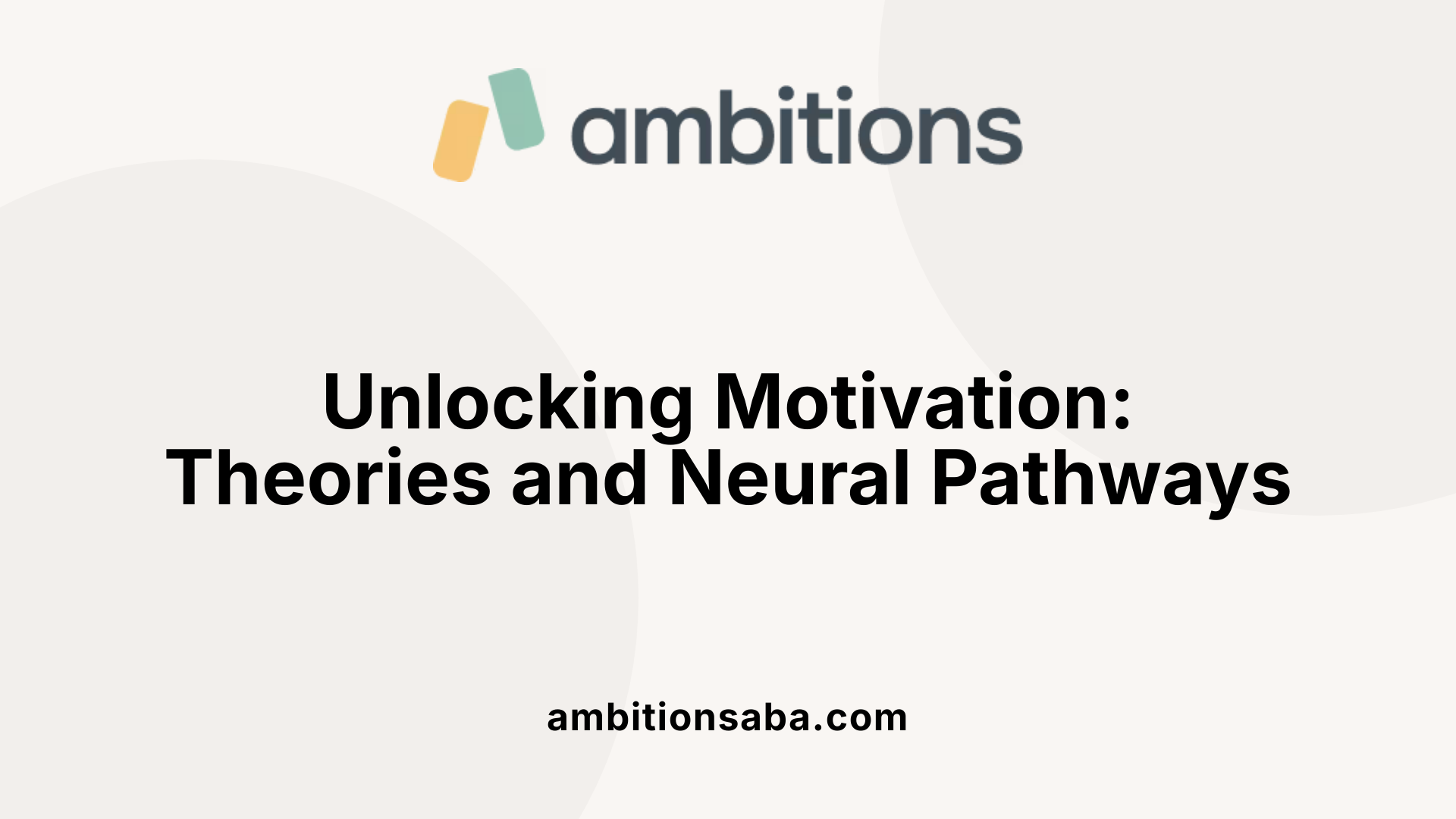Understanding Internal Motivation: Foundations and Significance
Supporting the development of internal motivation is crucial for fostering lifelong learning, personal growth, and meaningful engagement across educational and developmental contexts. Rooted in psychological theories such as Self-Determination Theory (SDT), intrinsic motivation involves engaging in activities driven by internal desires like curiosity, enjoyment, and personal relevance. This internal drive underpins sustained effort, resilience, and creativity, which are vital for individual success and well-being. Neuroscientific research further elucidates how intrinsic motivation is supported by dopaminergic systems and complex brain networks that facilitate exploration and mastery. Recognizing these foundations informs effective strategies to nurture internal motivation, leading to deeper, more authentic forms of engagement that transcend external rewards.
Theoretical and Neural Foundations of Intrinsic Motivation

What are the theoretical frameworks and psychological principles underlying intrinsic motivation?
Intrinsic motivation refers to engaging in activities because they are inherently interesting, satisfying, or enjoyable. Understanding its basis involves exploring influential psychological theories, particularly Self-Determination Theory (SDT). SDT emphasizes that the fulfillment of three basic psychological needs—autonomy, competence, and relatedness—is essential for fostering intrinsic motivation.
When these needs are met, individuals tend to pursue activities driven by internal interests and personal satisfaction, rather than external rewards or pressures. This internal drive promotes sustained engagement, mastery, and well-being. For example, a student learning a new skill out of curiosity or passion exemplifies intrinsic motivation.
Neuroscientific insights complement this understanding by revealing that intrinsic motivation involves specific brain systems. Dopaminergic pathways—neurochemical systems associated with reward and exploration—play a crucial role. Additionally, certain brain networks coordinate cognitive processes related to motivation, including the salience network (which detects relevance), the central executive network (focused attention and problem-solving), and the default mode network (self-referential and internal thought processes).
Psychological principles vital to intrinsic motivation include curiosity, interest, and the desire for mastery. These elements foster engagement by making activities feel rewarding in their own right. Overall, the interaction of motivational theories and neural mechanisms provides a comprehensive understanding of why and how individuals remain internally motivated.
Creating an Environment That Cultivates Internal Motivation

What are examples of internal motivations and how can they be encouraged?
Examples of internal motivations include engaging in activities because they are enjoyable, personally meaningful, or driven by curiosity, such as playing sports for fun, learning a new language out of interest, or painting for personal satisfaction. These motivations stem from intrinsic needs like autonomy, competence, and relatedness, as outlined by Self-Determination Theory. To encourage internal motivation, it is effective to provide meaningful and autonomous tasks, foster a growth mindset, and create an environment that supports curiosity and mastery. Recognizing and cultivating personal interest and internal rewards help sustain motivation and promote overall well-being. Ultimately, nurturing internal motivations leads to greater persistence, satisfaction, and a sense of fulfillment in various endeavors.
What are strategies for supporting and developing internal motivation in learners?
Strategies to support and develop internal motivation include fostering learners' needs for autonomy, competence, and relatedness through providing choices, meaningful challenges, and opportunities for social connection. Developing mastery by setting clear, specific goals and offering diverse ways for students to showcase their skills boosts confidence and intrinsic interest. Connecting educational content to real-world problems, personal interests, or future aspirations adds purpose, making learning more engaging. Using positive, effort-focused feedback, encouraging self-reflection, and creating supportive, respectful environments help cultivate internal motivation. Moreover, involving students actively in their learning through interests and responsibilities nurtures a sense of ownership and curiosity, leading to deep, sustained engagement.
Why is cultivating intrinsic motivation important in educational and developmental contexts, and what methods can be used?
Fostering intrinsic motivation is vital because it encourages learners to engage deeply and persistently, leading to meaningful understanding and skill development. It supports resilience, creativity, and lifelong learning. Methods to cultivate it include designing tasks that are optimally challenging, ensuring learners have meaningful choices in their learning paths, and connecting lessons to learners’ interests and future goals. Creating nurturing environments that promote social relatedness, offering timely positive reinforcement, and encouraging exploration and curiosity further reinforce internal motivation. Technologies that enable personalized, interactive learning also empower learners to take charge of their motivation.
How does neuroscientific and psychological research inform our understanding of how intrinsic motivation develops and functions?
Neuroscientific studies show that intrinsic motivation is rooted in dopaminergic systems associated with exploring, seeking novelty, and mastery. Brain regions such as the ventral tegmental area (VTA), nucleus accumbens (NAcc), and the striatum demonstrate activity correlating with motivated exploration and positive affect. These behaviors involve dynamic interplay among large-scale neural networks: the salience network detects significant stimuli; the default mode network relates to self-referential thoughts; and the central executive network manages focused attention. Psychologically, Self-Determination Theory emphasizes that satisfying basic needs for autonomy, competence, and relatedness facilitates the development of intrinsic motivation. This alignment of neural circuitry and psychological needs highlights how motivation is both biologically embedded and psychologically driven, supporting sustained engagement and adaptive behaviors across ages and contexts.
How can fostering a supportive environment enhance intrinsic motivation?
Creating environments that prioritize autonomy, competence, and relatedness deeply influences intrinsic motivation. For autonomy, offering choices in activities, encouraging self-directed learning, and providing meaningful rationales for tasks promote a sense of ownership and independence. Supporting competence involves designing appropriately challenging tasks, giving constructive feedback, and recognizing effort, which build confidence. Fostering relatedness by establishing warm, respectful relationships, promoting social interactions, and creating a safe atmosphere encourages learners to feel valued and connected.
In practice, teachers can implement strategies such as engaging storytelling, connecting lessons to students’ interests, and using collaborative learning activities that foster a sense of community. These approaches engender a supportive climate where curiosity and intrinsic desire to learn flourish, ultimately leading to more motivated, engaged learners.
The impact of environment on motivation across ages and backgrounds
Research indicates that intrinsic motivation can be cultivated from early childhood through adulthood, with the environment playing a central role at each stage. In early childhood, positive caregiver relationships and playful exploration lay the foundation, emphasizing autonomy and curiosity. For adolescents and adults, belongingness, relevance of learning activities, and recognition of efforts maintain motivation. Socio-cultural factors influence how environments support autonomy and competence; for example, culturally responsive teaching respects diverse backgrounds, fostering relatedness and intrinsic interest.
Low-income students may experience declines in motivation due to external stressors, but supportive environments that provide autonomy and social acceptance can buffer these effects. Across all ages, environments that respect individual interests, encourage meaningful participation, and foster social bonds strengthen intrinsic motivation, supporting lifelong learning and personal growth.
Practical Approaches for Educators and Parents
How can modeling intrinsic motivation and creating supportive environments enhance student engagement?
Teachers and parents play a crucial role in fostering internal motivation by demonstrating enthusiasm and genuine interest in learning activities. When adults model curiosity, persistence, and a growth mindset, children are more likely to internalize these attitudes. Creating an environment that emphasizes autonomy, relatedness, and competence helps satisfy fundamental psychological needs, which are essential for intrinsic motivation.
Supportive environments include offering choices, encouraging exploration, and celebrating effort and progress. Using positive relationships and respectful communication fosters a sense of belonging, which enhances motivation. Additionally, providing a safe space for children to express ideas and take risks nurtures their confidence and desire to learn.
How can providing meaningful and autonomous tasks boost motivation?
Providing tasks that are relevant to students’ interests and real-world experiences increases their engagement and internal drive. When children perceive tasks as purposeful, they connect learning to their personal goals and future aspirations.
Allowing students to choose topics or methods of demonstrating understanding promotes autonomy. For instance, offering options for project formats or presentation styles helps learners feel ownership over their work. Structured guidance combined with independence encourages mastery and persistence.
Why is celebrating progress and fostering a growth mindset important?
Recognizing small achievements and progress along the learning journey reinforces a positive attitude toward effort and development. Such celebrations motivate students to continue striving for improvement, even when faced with challenges.
Emphasizing a growth mindset—that abilities can be developed through dedication and hard work—encourages resilience. Teachers and parents can focus on praising strategies, perseverance, and effort rather than innate talent or correctness. This mindset cultivates a love for learning and sustains motivation.
How do storytelling, real-world connections, and constructive feedback support motivation?
Incorporating storytelling and media content connects learning to familiar, meaningful narratives, sparking curiosity and emotional engagement. Demonstrating real-world applications, such as community projects or career links, shows relevance and purpose, which motivates learners.
Providing constructive, growth-focused feedback guides students on how to improve, fostering a sense of competence and confidence. Reflection opportunities allow children to recognize their achievements, identify areas for growth, and set future goals. Together, these strategies promote an internal drive rooted in understanding, relevance, and personal growth.
| Strategy | Implementation | Expected Impact |
|---|---|---|
| Model enthusiasm | Demonstrate curiosity and persistence | Build genuine interest and a growth mindset |
| Provide choices | Offer options in tasks and projects | Increase autonomy and ownership |
| Celebrate progress | Recognize small achievements regularly | Boost confidence and motivation |
| Connect to real life | Use case studies, stories, and practical examples | Enhance relevance and purpose |
| Offer meaningful feedback | Focus on effort and strategies | Foster resilience and competence |
Supporting internal motivation through these methods aligns with psychological research and educational best practices. Combining these approaches creates a nurturing environment where children can develop a lifelong love for learning, driven by their internal interests and passions.
Supporting Internal Motivation Across Diverse Contexts and Ages
How can motivation be supported for children, adolescents, and adults?
Supporting motivation across different age groups involves fostering a sense of autonomy, mastery, and purpose. For children, this means providing choices in activities, encouraging play, and making learning both meaningful and relevant. For adolescents, creating opportunities for peer engagement, building identity, and offering achievable challenges nurtures persistence. Adults benefit from setting personal goals, connecting learning to their life or career aspirations, and fostering a sense of competence.
Empowering individuals at every stage to take ownership of their learning and growth can spark authentic interest and sustained motivation. Techniques such as active participation in planning, providing constructive feedback, and promoting curiosity help deepen engagement regardless of age.
How does socio-economic background influence motivation practices?
Socio-economic factors can impact motivation by shaping access to resources, social support, and opportunities for autonomy. In lower-income contexts, providing a sense of relatedness, ensuring relevance of content, and creating safe environments are particularly critical. Incentivizing effort thoughtfully, offering tailored support, and fostering community engagement can mitigate some disadvantages linked to socio-economic limitations.
Strategies that focus on intrinsic motivators—such as highlighting personal relevance and promoting mastery goals—can be especially effective in these settings. These approaches help sustain motivation without reliance on external rewards that might be less accessible.
How should strategies adapt for different developmental stages?
Early Childhood
Activities should foster exploration, curiosity, and social bonding. Incorporating play, storytelling, and hands-on tasks builds foundational motivation.
Middle Childhood to Adolescence
Support autonomy through choices, challenge students appropriately, and emphasize mastery over performance. Reflection exercises and goal-setting foster internal motivation.
Adulthood
Encourage self-directed learning, linking objectives to personal values and future plans. Providing feedback that emphasizes progress and competence sustains engagement.
Adapting strategies to align with developmental capacities and social contexts ensures effectiveness.
What does current research say about evidence-based practices that are effective universally?
Research confirms that supporting the three core needs—autonomy, competence, and relatedness—is universally effective in promoting internal motivation. Self-determination theory underpins much of this evidence, indicating that when individuals experience agency, skill mastery, and connection, they are more likely to develop intrinsic motivation.
Neuroscientific studies complement this understanding by showing that intrinsically motivated behaviors activate dopamine-related brain pathways, which promote exploration, curiosity, and positive affect. Brain imaging reveals that such motivation recruits specific large-scale networks—salience, default mode, and central executive networks—indicating a biological foundation for these strategies.
Empirical evidence from diverse educational settings demonstrates that environments fostering choice, challenge, social connectedness, and a growth mindset result in higher engagement, better learning outcomes, and enhanced well-being. These findings underscore the wide applicability of these practices, regardless of age, cultural background, or socio-economic status.
Harnessing Internal Motivation for Lifelong Success
In conclusion, supporting the development of internal motivation involves a multi-faceted approach grounded in psychological theories and neuroscience. Creating environments and relationships that satisfy needs for autonomy, competence, and relatedness—while fostering curiosity, mastery, and purpose—can profoundly influence learners’ engagement and resilience. Practical strategies, from providing choices and meaningful feedback to connecting learning with real-world relevance, empower individuals across all ages and backgrounds to take ownership of their growth. As evidence suggests, cultivating internal motivation is not only essential for academic achievement but also for developing motivated, self-directed lifelong learners. By integrating these insights into educational and developmental practices, educators and parents can foster a love for learning that persists beyond the classroom, ultimately supporting individuals in achieving their full potential and thriving in an ever-changing world.
References
- Help Students Build Intrinsic Motivation - Edutopia
- How to Instill Intrinsic Motivation - 7 Mindsets
- The Emerging Neuroscience of Intrinsic Motivation: A New Frontier ...
- How to Increase Intrinsic Motivation (According to Science)
- How to Motivate Children: Science-Based Approaches for Parents ...
- Motivation: Top Twenty Principles 9-12 for Early Childhood Education
- [PDF] Self-Determination Theory and the Facilitation of Intrinsic Motivation ...
- Nine Strategies to Spark Adult Students' Intrinsic Motivation
- What Is Intrinsic Motivation? | American University
- How to encourage intrinsic motivation in the clinical teaching ...



